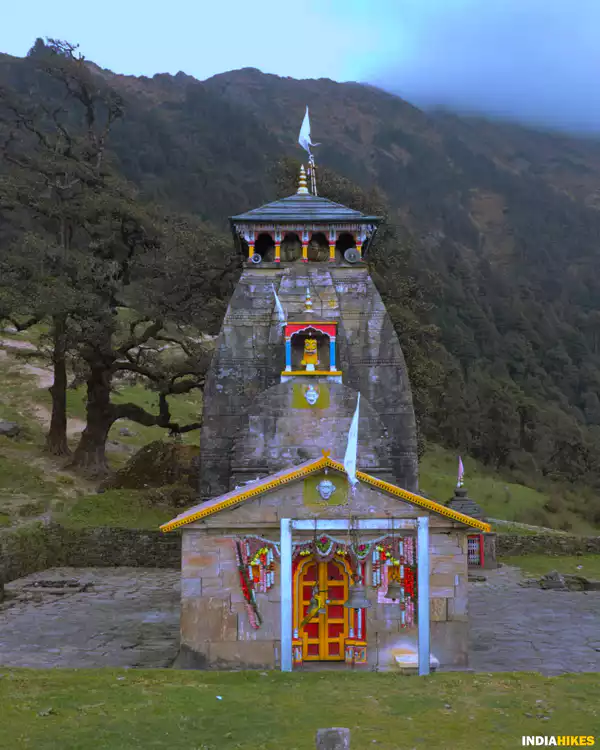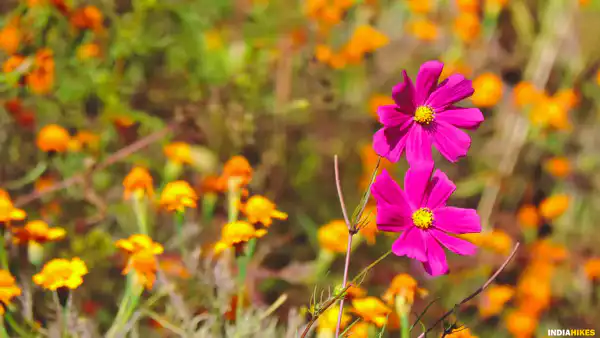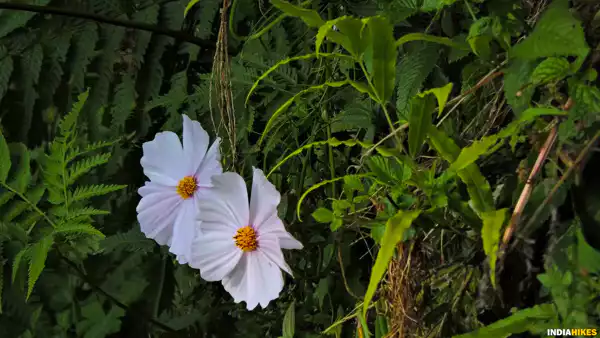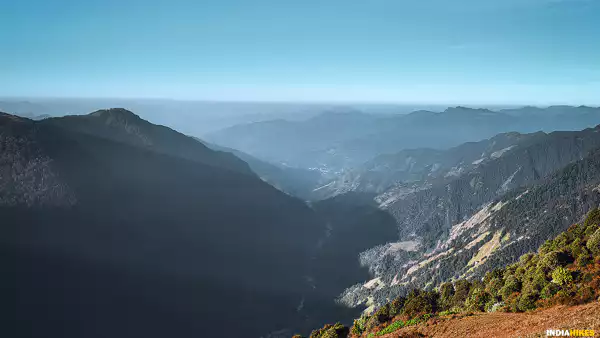Description
The Complete Guide to Madmaheshwar Trek
Madmaheshwar trek — also called Madhyamaheshwar trek or Buda Madmaheshwar trek — is not like any other trek to a mountain top or to the top of a meadow. Yes, you will reach the meadows at the end of the trek. But, the specialty of this trek is that the trail to the top is taken by pilgrims to offer their prayers at Madhyamaheshwar temple, which is one of the five “Panch Kedars.”
The place is filled with mythology and the legend is linked to the period of Mahabharata — one of the two epics in Hinduism — where Bhima, the second born of the Pandavas, built the Madhyamaheshwar temple to atone for their sin of killing Kauravas and Brahmans in the Kurukshetra war. The temple is dedicated to Lord Shiva and is worshipped in the form of a navel-shaped Lingam.
Madmaheshwar trek is situated in the Kedarnath Wildlife Sanctuary in the northern Himalayas. The sanctuary is famous for the Himalayan Musk Deer and is protecting this endangered species. It is also one of the largest biodiversity zones in India, with a rich variety of flora and fauna found here.
It is a treat to hike this trail, which has a plethora of things to watch out for!
This 3-day, 32 km trek takes you through quaint villages, coniferous forests, and grasslands, with the Madhyamaheshwar Ganga river flowing beneath you on the first day.
The view of the first light of the sun on the Chaukhamba massif from Buda Madmaheshwar is the highlight of the trek and makes all the effort worthwhile. If there is one reason to do the Madmaheshwar trek, it is this!
That said, this trek requires a decent level of fitness and can be attempted as a first trek only by beginners who are fit. A 5,000 ft ascent on the second day, combined with a total distance of approximately 32 kilometers over 3 days, is very demanding for first-time trekkers.
Table of Contents:
- Highlights of Madmaheshwar Trek
- Trail Information
- Best Time to Visit Madmaheshwar
- How to Reach Madmaheshwar Trek
- Is Madmaheshwar Trek Difficult?
- How to Get Fit for the Madmaheshwar Trek
- Things to Take on Madmaheshwar Trek
- Frequently Asked Questions About the Madmaheshwar Trek
- Nearby Places to Visit After the Trek
Highlights of Madmaheshwar Trek
- The first light on the Chaukhamba massif
Usually, you get to see the sunlight at dawn fall on mountain peaks when you reach an altitude of 14,000 ft and above. On the Madmaheshwar trek, which barely touches 11,000 ft, watching the first rays of the sun kissing the Chaukhamba range will leave you breathless. It’s so beautiful that you want to freeze the moment forever!
- Close encounter with the Chaukhamba massif
There are treks that provide up-close views of a mountain range after many days of strenuous hiking. The Madmaheshwar trek, however, takes you so close to the Chaukhamba massif that you almost feel like you are within an arm’s reach of the mountains.
- Madhyamaheshwar temple
People trek over 32 kilometers to visit this temple because of the sanctity it offers. Being one of the Panch Kedars, this temple is visited fourth in the series after Kedarnath, Tungnath, and Rudranath. The last temple visited after Madhyamaheshwar is Kalpeshwar.
- A rare opportunity to spot many species of birds
Kedarnath Wildlife Sanctuary, being a diverse ecological system, provides an excellent opportunity to spot a variety of flora and fauna. If you are extremely lucky, you may spot the Himalayan Musk Deer, an endangered and protected species in the sanctuary.
Madhyamaheshwar Trek – A Spiritual Journey in the Heart of Himalayas (5 Days Itinerary)
Madhyamaheshwar, one of the Panch Kedar temples dedicated to Lord Shiva, is located in the Rudraprayag district of Uttarakhand. Surrounded by dense forests and snow-covered peaks like Chaukhamba and Kedarnath, this trek offers a peaceful blend of spiritual devotion and natural beauty. The journey to Madhyamaheshwar is less crowded, making it ideal for those who seek quiet and connection with nature.
Day 1: Rishikesh to Ukhimath (Approx. 200 km / 7–8 hours)
Your journey begins from Rishikesh with a scenic drive through Devprayag, Rudraprayag, and Guptkashi. By evening, reach Ukhimath, a small spiritual town and winter seat of Lord Kedarnath. Overnight stay at a hotel or guesthouse.
Day 2: Ukhimath to Ransi Village – Trek to Bantoli (Drive 30 km + Trek 6 km)
Drive to Ransi Village, the starting point of the Madhyamaheshwar trek. From there, begin a 6 km trek through dense forests and riverside trails to reach Bantoli, a beautiful hamlet where the Madhyamaheshwar Ganga and Martyenda Ganga rivers meet. Stay overnight in tents or basic lodges.
Day 3: Bantoli to Madhyamaheshwar (Approx. 10–11 km trek)
Start the day early and trek uphill towards Madhyamaheshwar Temple, located at an altitude of 3,289 meters. The trail is peaceful and offers stunning views of Himalayan peaks. Upon reaching the temple, explore the surroundings and enjoy the serenity. Attend evening aarti and stay overnight in guesthouses or dharamshalas near the temple.
Day 4: Optional Hike to Budha Madhyamaheshwar + Trek Down to Ransi
Early risers can take a short hike (around 1.5 km) to Budha Madhyamaheshwar, a viewpoint offering breathtaking sunrise views of Chaukhamba, Neelkanth, and Kedarnath peaks. After returning, begin your trek back to Ransi Village via Bantoli. Overnight stay in Ransi or Ukhimath.
Day 5: Ransi/Ukhimath to Rishikesh (Approx. 200 km / 7–8 hours)
After breakfast, drive back to Rishikesh with a heart full of divine experiences and Himalayan memories.
Best Time to Visit:
May to June and September to early November – when the weather is clear and the trails are open.
Trek Difficulty:
Moderate – Requires decent physical fitness due to long walking hours and altitude.







Be the first to review “Madhyamaheshwar Trek”